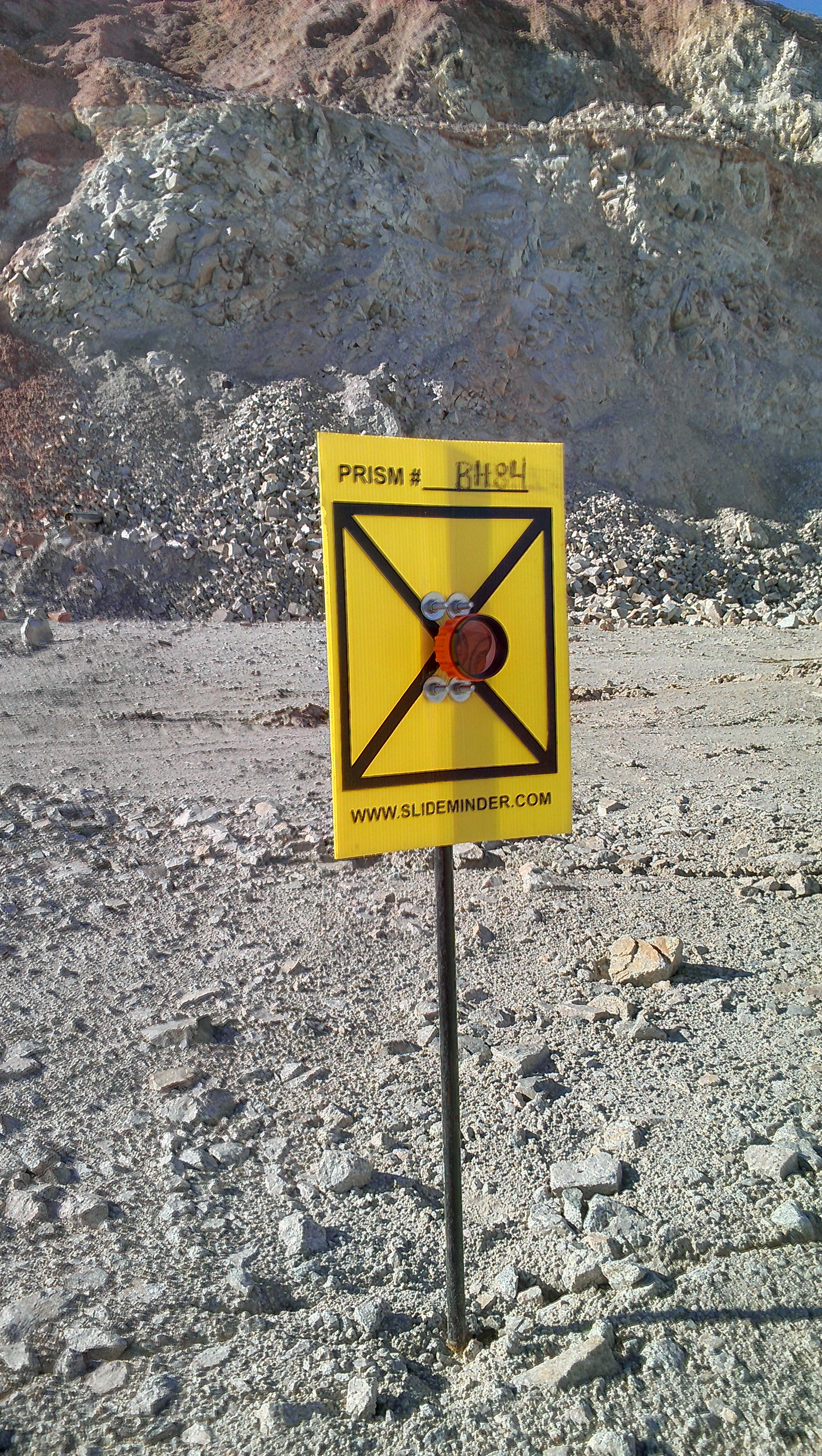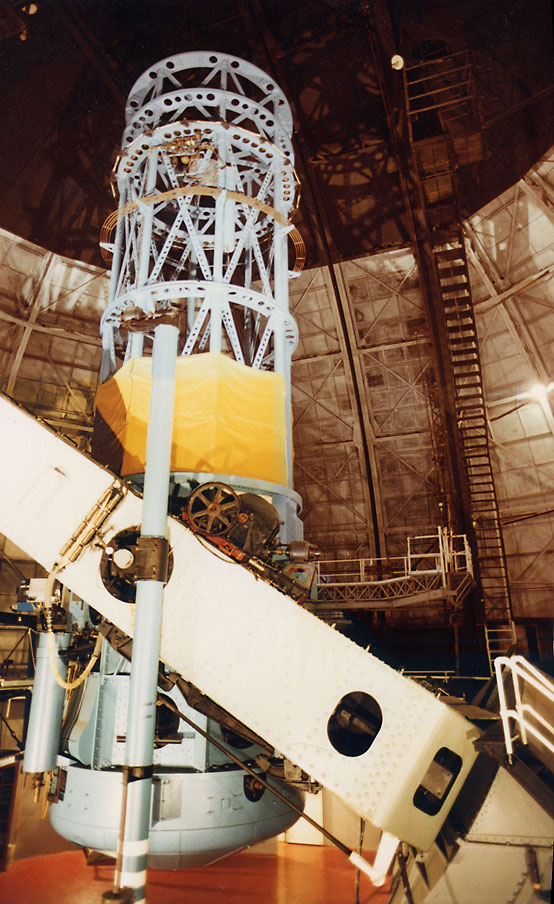|
Theodolite
A theodolite () is a precision optical instrument for measuring angles between designated visible points in the horizontal and vertical planes. The traditional use has been for land surveying, but it is also used extensively for building and infrastructure construction, and some specialized applications such as meteorology and rocket launching. It consists of a moveable telescope mounted so it can rotate around horizontal and vertical axes and provide angular readouts. These indicate the orientation of the telescope, and are used to relate the first point sighted through the telescope to subsequent sightings of other points from the same theodolite position. These angles can be measured with accuracies down to microradians or seconds of arc. From these readings a plan can be drawn, or objects can be positioned in accordance with an existing plan. The modern theodolite has evolved into what is known as a total station where angles and distances are measured electronically, a ... [...More Info...] [...Related Items...] OR: [Wikipedia] [Google] [Baidu] |
Surveying
Surveying or land surveying is the technique, profession, art, and science of determining the terrestrial two-dimensional or three-dimensional positions of points and the distances and angles between them. A land surveying professional is called a land surveyor. These points are usually on the surface of the Earth, and they are often used to establish maps and boundaries for ownership, locations, such as the designed positions of structural components for construction or the surface location of subsurface features, or other purposes required by government or civil law, such as property sales. Surveyors work with elements of geodesy, geometry, trigonometry, regression analysis, physics, engineering, metrology, programming languages, and the law. They use equipment, such as total stations, robotic total stations, theodolites, GNSS receivers, retroreflectors, 3D scanners, LiDAR sensors, radios, inclinometer, handheld tablets, optical and digital levels, subsurface loc ... [...More Info...] [...Related Items...] OR: [Wikipedia] [Google] [Baidu] |
Cross-hairs
A reticle, or reticule also known as a graticule, is a pattern of fine lines or markings built into the eyepiece of an optical device such as a telescopic sight, spotting scope, theodolite, optical microscope or the screen of an oscilloscope, to provide measurement references during visual inspections. Today, engraved lines or embedded fibers may be replaced by a digital image superimposed on a screen or eyepiece. Both terms may be used to describe any set of patterns used for aiding visual measurements and calibrations, but in modern use ''reticle'' is most commonly used for weapon sights, while ''graticule'' is more widely used for non-weapon measuring instruments such as oscilloscope display, astronomic telescopes, microscopes and slides, surveying instruments and other similar devices. There are many variations of reticle pattern; this article concerns itself mainly with the most rudimentary reticle: the crosshair. Crosshairs are typically represented as a pair of p ... [...More Info...] [...Related Items...] OR: [Wikipedia] [Google] [Baidu] |
Total Station
A total station (TS) or total station theodolite (TST) is an electronic/optical instrument used for surveying and building construction. It is an electronic transit theodolite integrated with electronic distance measurement (EDM) to measure both vertical and horizontal angles and the slope distance from the instrument to a particular point, and an on-board computer to collect data and perform triangulation calculations. Robotic or motorized total stations allow the operator to control the instrument from a distance via remote control. In theory, this eliminates the need for an assistant staff member as the operator holds the retroreflector and controls the total station from the observed point. In practice however, an assistant surveyor is often needed when the surveying is being conducted in busy areas such as on a public carriageway or construction site. This is to prevent people from disrupting the total station as they walk past, which would neccesitate resetting the tr ... [...More Info...] [...Related Items...] OR: [Wikipedia] [Google] [Baidu] |
Tribrach (instrument)
A tribrach with an optical plummet (the black cylinder pointing to the left lower corner of the image). A tribrach is an attachment plate used to attach a surveying instrument, for example a theodolite, total station, GNSS antenna or target to a tripod. A tribrach allows the survey instrument to be repeatedly placed in the same position over a surveying marker point with sub-millimetre precision, by loosening and re-tightening a lock to adjust the instrument base in a horizontal plane. Components of a tribrach The device consists of two triangular metal plates connected at their corners by leveling thumbscrews, a bubble level, a locking mechanism and often an optical plummet. The centre of the bottom plate of the tribrach has a 5/8-11 UNC thread bolt hole which is used to attach the tribrach to the tripod. The top plate has three small holes or slots spaced 120˚ apart above leveling thumbscrews, and a locking mechanism which enables a survey instrument or target to be a ... [...More Info...] [...Related Items...] OR: [Wikipedia] [Google] [Baidu] |
Trunnion
A trunnion (from Old French "''trognon''", trunk) is a cylindrical protrusion used as a mounting or pivoting point. First associated with cannons, they are an important military development. Alternatively, a trunnion is a shaft that positions and supports a tilting plate. This is a misnomer, as in reality it is a cradle for the true trunnion. In mechanical engineering (see the trunnion bearing section below), it is one part of a rotating joint where a shaft (the trunnion) is inserted into (and turns inside) a full or partial cylinder. Medieval history In a cannon, the trunnions are two projections cast just forward of the center of mass of the cannon and fixed to a two-wheeled movable gun carriage. As they allowed the muzzle to be raised and lowered easily, the integral casting of trunnions is seen by military historians as one of the most important advances in early field artillery. With the creation of larger and more powerful siege guns in the early 15th century, ... [...More Info...] [...Related Items...] OR: [Wikipedia] [Google] [Baidu] |
Telescope
A telescope is a device used to observe distant objects by their emission, absorption, or reflection of electromagnetic radiation. Originally meaning only an optical instrument using lenses, curved mirrors, or a combination of both to observe distant objects, the word ''telescope'' now refers to a wide range of instruments capable of detecting different regions of the electromagnetic spectrum, and in some cases other types of detectors. The first known practical telescopes were refracting telescopes with glass lenses and were invented in the Netherlands at the beginning of the 17th century. They were used for both terrestrial applications and astronomy. The reflecting telescope, which uses mirrors to collect and focus light, was invented within a few decades of the first refracting telescope. In the 20th century, many new types of telescopes were invented, including radio telescopes in the 1930s and infrared telescopes in the 1960s. Etymology The word ''telescope'' ... [...More Info...] [...Related Items...] OR: [Wikipedia] [Google] [Baidu] |
Parallax
Parallax is a displacement or difference in the apparent position of an object viewed along two different lines of sight and is measured by the angle or semi-angle of inclination between those two lines. Due to foreshortening, nearby objects show a larger parallax than farther objects when observed from different positions, so parallax can be used to determine distances. To measure large distances, such as the distance of a planet or a star from Earth, astronomers use the principle of parallax. Here, the term ''parallax'' is the semi-angle of inclination between two sight-lines to the star, as observed when Earth is on opposite sides of the Sun in its orbit. These distances form the lowest rung of what is called "the cosmic distance ladder", the first in a succession of methods by which astronomers determine the distances to celestial objects, serving as a basis for other distance measurements in astronomy forming the higher rungs of the ladder. Parallax also affects opti ... [...More Info...] [...Related Items...] OR: [Wikipedia] [Google] [Baidu] |
Optical Level
A level is an optical instrument used to establish or verify points in the same horizontal plane in a process known as levelling, and is used in conjunction with a levelling staff to establish the relative height levels of objects or marks. It is widely used in surveying and construction to measure height differences and to transfer, measure, and set heights of known objects or marks. It is also known as a surveyor's level, builder's level, dumpy level or the historic "Y" level. It operates on the principle of establishing a visual level relationship between two or more points, for which an inbuilt telescope and a highly accurate bubble level are used to achieve the necessary accuracy. Traditionally the instrument was completely adjusted manually to ensure a level line of sight, but modern automatic versions self-compensate for slight errors in the coarse levelling of the instrument, and are thereby quicker to use. The optical level should not be confused with a theodolite, whi ... [...More Info...] [...Related Items...] OR: [Wikipedia] [Google] [Baidu] |
Vernier Scale
A vernier scale, named after Pierre Vernier, is a visual aid to take an accurate measurement reading between two graduation markings on a linear scale by using mechanical interpolation, thereby increasing resolution and reducing measurement uncertainty by using vernier acuity to reduce human estimation error. It may be found on many types of instrument measuring linear or angular quantities, but in particular on a vernier caliper which measures internal or external diameter of hollow cylinders. The vernier is a subsidiary scale replacing a single measured-value pointer, and has for instance ten divisions equal in distance to nine divisions on the main scale. The interpolated reading is obtained by observing which of the vernier scale graduations is coincident with a graduation on the main scale, which is easier to perceive than visual estimation between two points. Such an arrangement can go to a higher resolution by using a higher scale ratio, known as the vernier constant. A ... [...More Info...] [...Related Items...] OR: [Wikipedia] [Google] [Baidu] |
Zenith
The zenith (, ) is an imaginary point directly "above" a particular location, on the celestial sphere. "Above" means in the vertical direction ( plumb line) opposite to the gravity direction at that location ( nadir). The zenith is the "highest" point on the celestial sphere. Origin The word "zenith" derives from an inaccurate reading of the Arabic expression (), meaning "direction of the head" or "path above the head", by Medieval Latin scribes in the Middle Ages (during the 14th century), possibly through Old Spanish. It was reduced to "samt" ("direction") and miswritten as "senit"/"cenit", the "m" being misread as "ni". Through the Old French "cenith", "zenith" first appeared in the 17th century. Relevance and use The term ''zenith'' sometimes means the highest point, way, or level reached by a celestial body on its daily apparent path around a given point of observation. This sense of the word is often used to describe the position of the Sun ("The sun reached i ... [...More Info...] [...Related Items...] OR: [Wikipedia] [Google] [Baidu] |
Optical Theodolite
Optics is the branch of physics that studies the behaviour and properties of light, including its interactions with matter and the construction of instruments that use or detect it. Optics usually describes the behaviour of visible, ultraviolet, and infrared light. Because light is an electromagnetic wave, other forms of electromagnetic radiation such as X-rays, microwaves, and radio waves exhibit similar properties. Most optical phenomena can be accounted for by using the classical electromagnetic description of light. Complete electromagnetic descriptions of light are, however, often difficult to apply in practice. Practical optics is usually done using simplified models. The most common of these, geometric optics, treats light as a collection of rays that travel in straight lines and bend when they pass through or reflect from surfaces. Physical optics is a more comprehensive model of light, which includes wave effects such as diffraction and interference that ... [...More Info...] [...Related Items...] OR: [Wikipedia] [Google] [Baidu] |

_crop.jpg)

.jpg)





